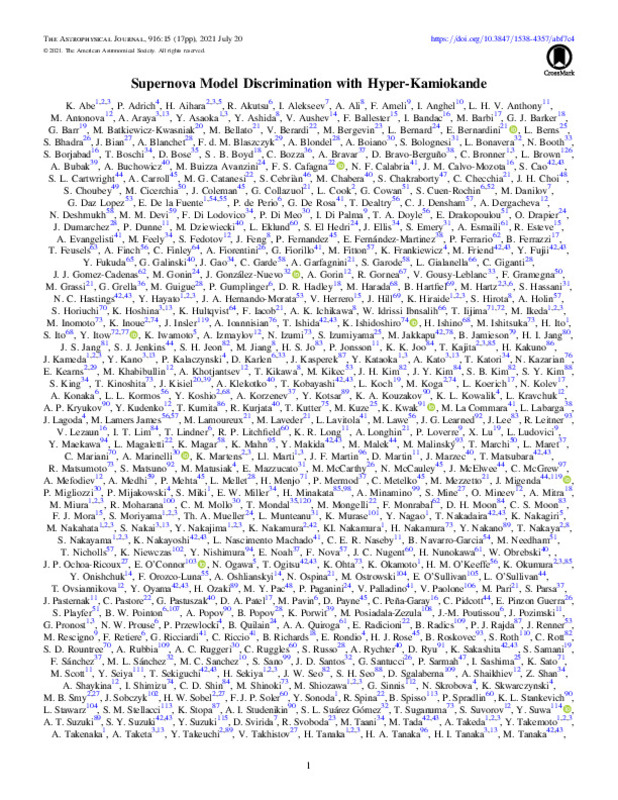JavaScript is disabled for your browser. Some features of this site may not work without it.
Buscar en RiuNet
Listar
Mi cuenta
Estadísticas
Ayuda RiuNet
Admin. UPV
Supernova Model Discrimination with Hyper-Kamiokande
Mostrar el registro completo del ítem
Abe, K.; Adrich, P.; Aihara, H.; Akutsu, R.; Alekseev, I.; Ali, A.; Ameli, F.... (2021). Supernova Model Discrimination with Hyper-Kamiokande. The Astrophysical Journal. 916(1):1-17. https://doi.org/10.3847/1538-4357/abf7c4
Por favor, use este identificador para citar o enlazar este ítem: http://hdl.handle.net/10251/189332
Ficheros en el ítem
Metadatos del ítem
| Título: | Supernova Model Discrimination with Hyper-Kamiokande | |
| Autor: | Abe, K. Adrich, P. Aihara, H. Akutsu, R. Alekseev, I. Ali, A. Ameli, F. Anghel, I. Anthony, L. H. V. Antonova, M. Araya, A. Asaoka, Y. Ashida, Y. Aushev, V. Esteve Bosch, Raul | |
| Fecha difusión: |
|
|
| Resumen: |
[EN] Core-collapse supernovae are among the most magnificent events in the observable universe. They produce many of the chemical elements necessary for life to exist and their remnants-neutron stars and black holes-are ...[+]
|
|
| Palabras clave: |
|
|
| Derechos de uso: | Reconocimiento (by) | |
| Fuente: |
|
|
| DOI: |
|
|
| Editorial: |
|
|
| Versión del editor: | https://doi.org/10.3847/1538-4357/abf7c4 | |
| Código del Proyecto: |
...[+] |
|
| Agradecimientos: |
We thank MacKenzie Warren, Ken'ichiro Nakazato, Tomonori Totani, Adam Burrows, David Vartanyan, and Irene Tamborra for access to the supernova models used in this work and for answering various related questions. This work ...[+]
|
|
| Tipo: |
|









